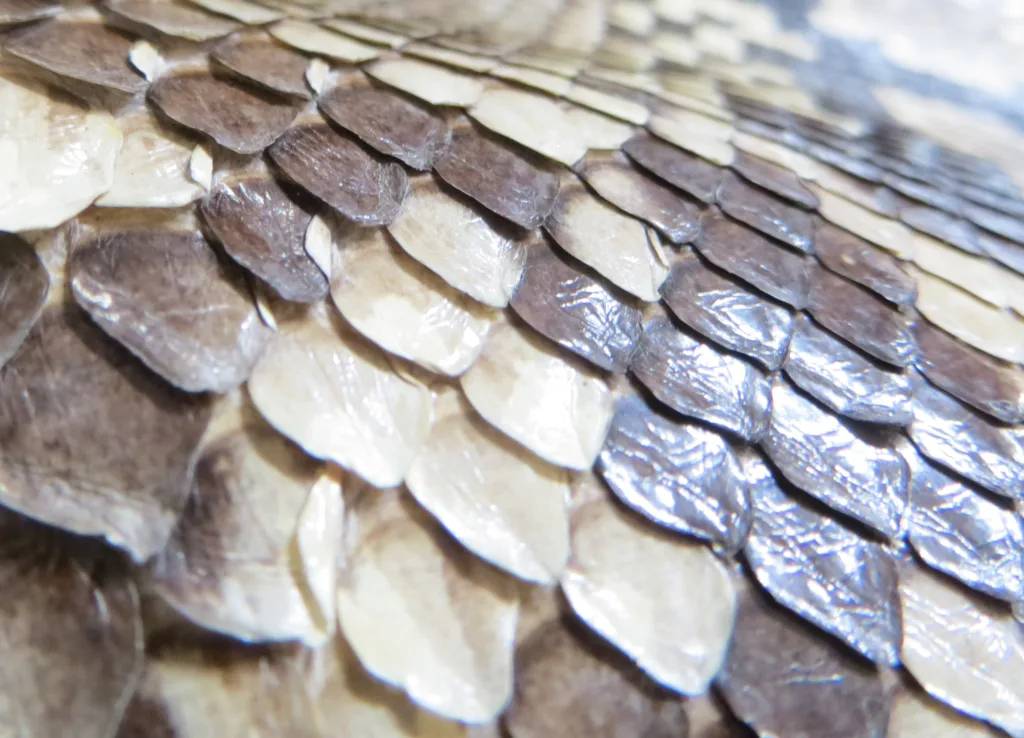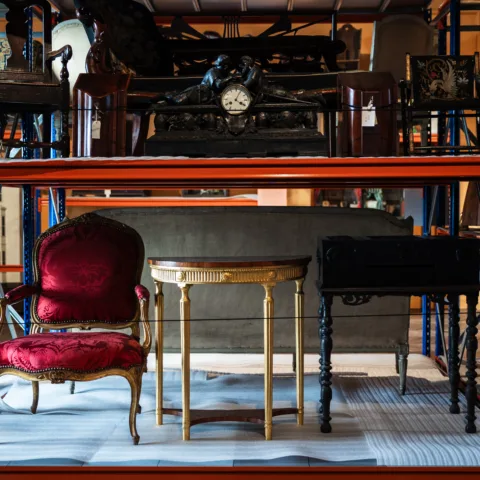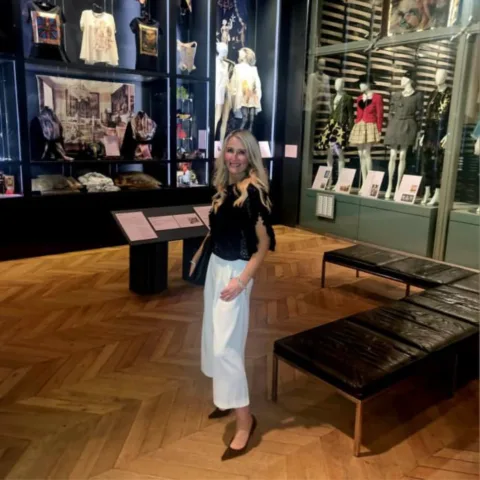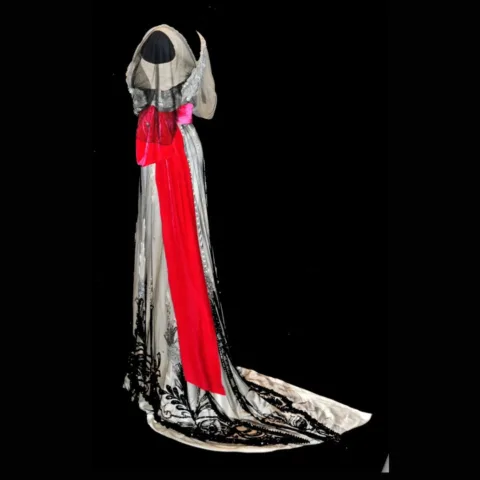The Bowes Museum Blog

Feather & Leather Conservation Workshops

As textile conservators, we deal with a wide range of material types, not just fabrics. Items of costume, and accessories frequently contain both decorative and structural elements made from the following materials types, among plenty of others; leather, feathers, plastic, metal, straw and wax (think leather handbags and shoes, feathered hair accessories, straw bonnets and wax orange blossom). Many textile conservators choose to expand their skill-set into other ‘organic’ materials (organic simply meaning derived from living things). All of our three Icon/HLF interns are given a generous budget for further training, which they can use however they see fit. Emily and Maria have recently attended workshops in the conservation of feathers and leather.
Feather Conservation
A few weeks ago, the Museum hosted a theoretical & practical workshop on the conservation of feathers. This was organised to tie in with our exhibition ‘Birds of Paradise: Plumes & Feathers in Fashion’. The course was run by Allyson Rae ACR, a freelance conservator and specialist on organic materials. 10 delegates attended the workshop, travelling from all over the UK, and from abroad to attend.
During the two day workshop we learnt about the nature of feathers, different types, their functions and structure, chemical composition, growth, colouring, and maintenance. We also looked at their use in different artefact types, from costume and accessories, to taxidermy, and ethnographic objects. We discussed the causes of their deterioration, both in use, and subsequently in storage and museum display, and the options for conservation, including ethical considerations.
Damage to feathers and feathered objects, as with many organic material types, can be caused during the lifetime of the feather on the bird – for example stress marks, wear or parasites and bacteria. However, the majority of the causes of deterioration are suffered afterwards, during the creation of the object, or during its use. Causes of damage include handling, display and storage; museums pests; the environment (airborne pollution, light, temperature and RH), the deterioration of associated materials in the object, and any previous repairs.
The other half of the workshop consisted of putting into practice some of the conservation treatments we had talked about, focusing on soil removal (dry and wet cleaning), re-shaping and repair of bent and broken feathers.

A demonstration of how to repair feathers (left). Workshop delegates working on their samples (right).
To compliment the course the delegates had the chance to visit the ‘Birds of Paradise’ exhibition, with a gallery talk by Fashion & Textile Curator, Joanna Hashagen. In addition, as a part of the programme, we had found various items of feather work from the stores to show the delegates, and allow them to inspect up close.

Katy Smith, Textile Conservator, showing some of the feathered objects from The Bowes Museum collection

1. Napoleonic livery hat [CST.106.C]; 2. White and red plumes, belonging to military hat collection [not catalogued]; 3.Painted feather fan [not catalogued]; 4. Ostrich feather plume [not catalogued]; 5. Doll’s house furniture made from white chicken feathers [TOY.256]; 6.Peacock feather’s fan [not catalogued]; 7. Hair ornament made from head of bird [CST.2.994]
Leather Conservation Workshop
Maria and I have just come back from a course on the conservation of leather, hosted by West Dean College. The course was run by Yvette Fletcher, who is Head of Conservation at The Leather Conservation Centre in Northampton; alongside Mike Redwood, one of the centre’s trustees, and an expert in the leather industry and production techniques.
West Dean College was the stunning setting for the course and with the option to stay in the main house it was quite an experience before the course even began! The course was three and a half days long, and we were able to make the most of the breaks each day to explore the house, which is an eclectic mix of art and antiques, and the grounds which are vast and immaculately kept.
The course began on the evening we arrived with an introduction to leather, and continued the following morning with the history of its production. The theoretical part of the course also included the deterioration of leather and preventive care of historic leather products.
We then moved onto the practical sessions, where we were shown a huge range of skins and furs as examples of different types of tanning (the process which stops the skins rotting) and how different types of animal skins feel and smell (!) when processed.
We were also able to try out leather conservation techniques using various conservation grade materials following an introduction and demonstration from Yvette. Whether this was consolidation of flaking leather finishes, dyeing leather patches for support or creating surface loss infills, it was great to have the time to try out different treatments and really interesting to see the results of the rest of the group.

Clockwise from top left: Maria testing various surface cleaning techniques on samples of leather; testing our new leather identification skills; Emily trying out leather dyeing techniques; a colour matching exercise using Selladerm dyes
On the final day of the course we had the chance to share our own experiences of working with leather objects and discuss any problems that may have arisen. It was brilliant to put the knowledge we had gained about the deterioration of leather and its conservation treatment into context, as well as learning a bit more about our fellow students!
The leather wall panel below is one of four, and part of the founder’s collection at The Bowes Museum. While re-storing some of the flat textiles in the stores, the panels were identified as needing conservation to re-shape the curled and distorted edges, as well as surface cleaning to remove the general sooty soiling from the painted surface. As a result of attending the leather course, Maria and I now have a much better understanding of suitable treatments for this type of leather object and will conserve them so they can go back into storage in a more stable condition.

Left: Painted and embossed leather panel [FW.351] Right: Close-up of leather panel showing soiling and cracking on the painted surface, and tears in the leather alongside old nail holes
By Emily Austin, Icon/HLF Textiles Conservation intern














